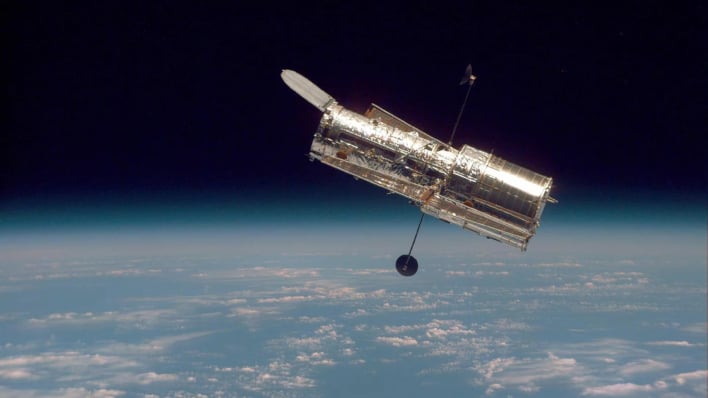NASA Seeks Private Sector Help To Extend Hubble's Life Span For Deep Space Exploration

NASA, other federal agencies, and commercial entities have an ever-increasing number of aging on-orbit satellites. This presents an increasing need to service, re-locate, de-orbit, dispose of, or otherwise manage them once the satellite's mission is complete. NASA recognizes that commercial space industry companies such as SpaceX and Blue Origin are developing and maturing space technologies and capabilities. For this reason, the space agency is seeking a partnership that will demonstrate capabilities to operate and provide in-space services, in particular, re-boosting the Hubble Space Telescope.
Hubble continues to provide proof that it is still a viable scientific satellite. The spacecraft, however, is predicted to reach a 500km orbit around 2025. Once it does, there is a risk that a rendezvous would be much more difficult. Unless Hubble is re-boosted to a higher altitude, it will reenter the Earth's atmosphere in the mid-2030s.

While SpaceX proposed the study in order to gain a better understanding of the technical challenges associated with servicing missions, it is non-exclusive, and other companies may propose similar studies with different rockets or spacecraft.
"This study is an exciting example of the innovative approaches NASA is exploring through private-public partnerships," remarked Thomas Zurbuchen, Associate Administrator for the Science Mission Directorate at NASA Headquarters in Washington. "As our fleet grows, we want to explore a wide range of opportunities to support the most robust, superlative science missions possible."

NASA expects the study to last up to six months, during which time the team will collect technical data from both Hubble and the SpaceX Dragon spacecraft. This data will allow the agency to decide if it would be possible to safely rendezvous, dock, and move Hubble into a more stable orbit.
"SpaceX and the Polaris Program want to expand the boundaries of current technology and explore how commercial partnerships can creatively solve challenging, complex problems," stated Jessica Jensen, Vice President of Customer Operations & Integration at SpaceX. "Missions such as servicing Hubble would help us expand space capabilities to ultimately help all of us achieve our goals of becoming a space-faring, multiplanetary civilization."

